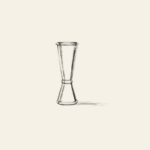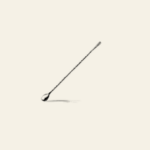Hello Cocktail Clan!
Measurements! Ever wondered why that homemade Margarita doesn’t taste like the one from your favorite bar? Or maybe your Old Fashioned is a bit too boozy? The secret often lies in the precision of your measurements.
As a blogger and mixologist, I’m here to spill the secrets on accurate cocktail measurements, ensuring your home bar creations are consistently delicious. So, grab your shaker, jigger, and let’s dive in!
Why Are Precise Measurements Crucial?
Think of a cocktail recipe as a delicate symphony of flavors. Each ingredient plays a vital role, and the right balance is key to achieving harmony. Inaccurate measurements can throw off the entire composition, resulting in a drink that’s too sweet, too sour, too strong, or just plain unbalanced.
Essential Tools for the Budding Mixologist
Before we get into the nitty-gritty of measurements, let’s equip you with the essential tools:
- Jigger: This hourglass-shaped tool is your best friend. Jiggers typically have two sides, offering different measurement options (e.g., 1 oz and 1.5 oz, or 25 ml and 50 ml).
- Measuring Spoons: For smaller quantities, a set of measuring spoons is indispensable. Look for sets that include ¼ teaspoon, ½ teaspoon, 1 teaspoon, and 1 tablespoon.
- Liquid Measuring Cup: While less common for individual cocktails, a liquid measuring cup can be handy for batching cocktails or measuring larger quantities of juice.
Decoding Cocktail Recipes
Cocktail recipes often employ abbreviations and specific terminology. Here’s a quick cheat sheet:
- oz: Ounce (fluid ounce)
- ml: Milliliter
- tsp: Teaspoon
- tbsp: Tablespoon
- dash: A few drops (usually around ⅛ teaspoon)
- splash: A small amount (slightly more than a dash)
- pinch: Amount of powdered ingredients that can be help between the thumb and forefinger
- bar spoon: ½ teaspoon or 2.5 ml
- parts: A relative measurement, allowing for scaling recipes (e.g., 2 parts gin, 1 part vermouth)
Mastering the Art of Measurement
Jigger:
- Fill the jigger to the brim for accurate measurements.
- Use the smaller side for stronger spirits and the larger side for less potent ingredients or mixers.
- For measurements not directly marked on your jigger, use a combination of the two sides or your measuring spoons.

Spooning Secrets:
- When measuring syrups or sticky ingredients, use a separate spoon to avoid contaminating the bottle.
- For dry ingredients like sugar, lightly spoon them into the measuring spoon without packing it down.

Free Pouring: A Skill for the Seasoned
- While it looks impressive, free pouring takes practice and a good sense of timing.
- Start by practicing with water, counting as you pour to develop consistency.
- Use consistent speed and height for pouring.
- Use consistent pacing on your counts.
Beyond Basic Measurements
- Parts and Ratios: Many classic cocktails rely on ratios (e.g., a Daiquiri is 2 parts rum, 1 part lime juice, ¾ part simple syrup). This allows for flexibility in scaling the recipe up or down.
- Building vs. Shaking vs. Stirring: The preparation method influences the final dilution of the cocktail. Shaking with ice adds more dilution than stirring.
- Adjusting to Taste: Even with precise measurements, personal preference plays a role. Don’t hesitate to adjust the sweetness, sourness, or strength to suit your palate.
Speaking of Measurements: Know Your Conversions!
Understanding how different units of measurement relate to each other is just as important as using your jigger correctly. It’s like learning the language of mixology! Here’s a breakdown of common conversions you’ll encounter:
Tips for Conversions
- Use a Conversion Chart: Keep a handy chart or online converter for quick reference.
| Ounces (oz) | Milliliters (ml) | Teaspoons (tsp) | Tablespoons (tbsp) |
| 0.25 | 7.4 | 1.5 | 0.5 |
| 0.5 | 14.8 | 3 | 1 |
| 0.75 | 22.2 | 4.5 | 1.5 |
| 1 | 29.6 | 6 | 2 |
| 1.25 | 37 | 7.5 | 2.5 |
| 1.5 | 44.4 | 9 | 3 |
| 1.75 | 51.8 | 10.5 | 3.5 |
| 2 | 59.1 | 12 | 4 |
| 2.25 | 66.5 | 13.5 | 4.5 |
| 2.5 | 73.9 | 15 | 5 |
| 2.75 | 81.3 | 16.5 | 5.5 |
| 3 | 88.7 | 18 | 6 |
- Round Up or Down: When dealing with small amounts, rounding to the nearest convenient measurement is usually acceptable.
- Focus on Ratios: For many cocktails, understanding the ratio of ingredients is more important than the exact measurements. For example, a classic Daiquiri is 2 parts rum to 1 part lime juice to ¾ parts simple syrup. You can use this ratio to make a single drink or a whole batch.
Why This Matters in Mixology
- Consistency: Accurate conversions ensure your cocktails taste the same every time, whether you’re following a recipe in milliliters or ounces.
- Scaling Recipes: If you want to make a larger batch of a cocktail, knowing conversions allows you to adjust the ingredient amounts without altering the drink’s balance.
- International Recipes: Many cocktail books and websites use different measurement systems. Being able to convert between them opens up a world of recipes.
Troubleshooting Common Measurement Mistakes
- Overpouring: This is the most common mistake, leading to overly strong or unbalanced drinks. Use your jigger consistently and avoid “topping off” pours.
- Inconsistent dashes and splashes: These can be subjective. Aim for consistency or use your measuring spoons for greater accuracy.
- Ignoring ice: Ice plays a crucial role in dilution. Use the right amount and type of ice specified in the recipe.
Practice Makes Perfect
Like any skill, mastering cocktail measurements takes practice. Start with simple recipes, gradually increasing the complexity as you gain confidence. Don’t be afraid to experiment and, most importantly, enjoy the process!
Cheers to your mixology journey!
I hope this guide empowers you to create delicious and well-balanced cocktails at home. Remember, precision is key, but don’t forget to have fun and let your creativity shine.
Now go forth and shake, stir, and sip your way to cocktail mastery!
The Cocktail Clan

